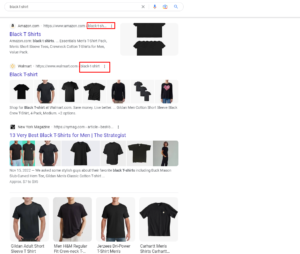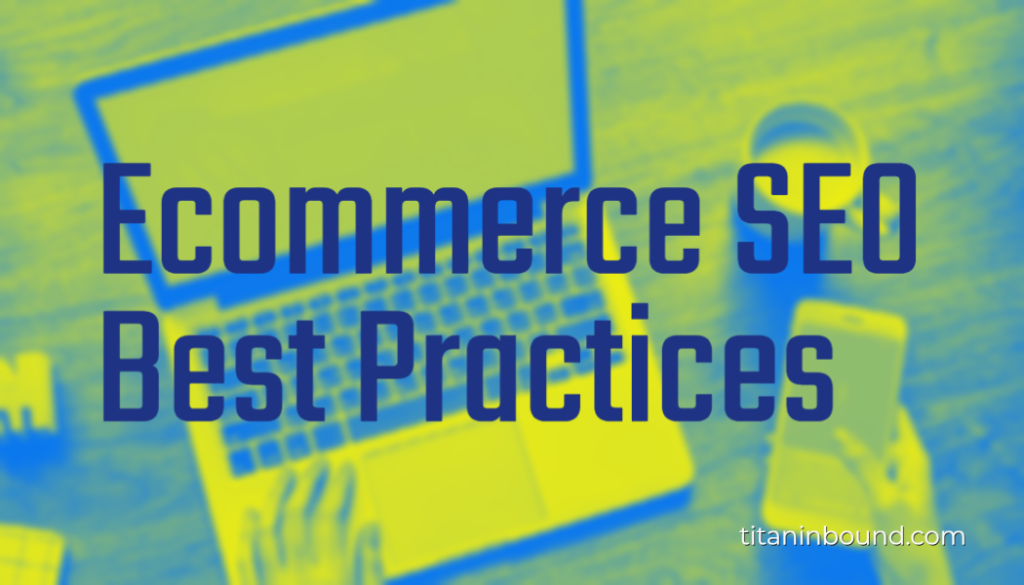Ever wondered, How some e-commerce stores are so successful at SEO?
But, some are figuring out how to rank on top and drive traffic. Build some links here and there, redesign their website, and blame their SEO agency. Or end up reading some posts like this.
let me make it clear here. There is a very thin line between winning and losing when it comes to ecommerce SEO. And that is following ecommerce SEO best practices.
Are you ready to learn about the best ecommerce SEO practices for 2023?
Let’s get started.
But before moving ahead, let’s set a bar for what are the best practices for you and your store.
How to define ecommerce SEO best practices?
To set the bar for best practices, you need to benchmark where you are standing currently and where you want to be.
Benchmarking can be in any form, considering ranking (top 3 keywords, the total number of keyword ranking, etc.), organic traffic, number of qualitative backlinks, current content assets, or revenue as well.
Once you have your benchmark, look at all the competitors above you. And see what they are doing.
You can only do so by performing manual analysis. But for manual analysis, you might need some tools.
Some of the tools that can help you in the competitive analysis are:
- Search Metrics
- Ahrefs
- SEMRush
- Screaming Frog
- And more
Note: all the above tools are the ones we use at Titan Inbound to perform competitive analysis.
After analyzing over 1800+ stores, we have figured out some of the common things that almost 78% of ecommerce stores have missed. The rest of the 22% are the ones who follow the best practices and are winning the game of SEO.
So, here are some of the best ecommerce SEO practices that winning stores follow.
12 Best Practices for Ecommerce SEO
- Keyword Research that Resonates,
- Start by researching top-ranking pages in your industry and see what they are ranking for.
- Once you have the list of keywords. Check what are all the places your competitor is using those keywords. It can be in content, meta, faqs schema, or a blog that is linking back to a landing page. If it’s a main page that you are checking there are huge chances of having the same category products on the page.
- And check for the frequency they are using and compare it with your page.
- SEO Best Practices for Product Pages
- A defined page structure with CTA in the first fold (following the color principle of 6:3:1)
- Unique Meta title and description.
- High-resolution images with ALT text.
- Keywords in the product title, description, URL, and FAQs with schema.
- Having an “Other Similar Products” section to reduce bounce rate.
- USP of product or store that separates you from your competition.
- Separate review section and social proof.
- Mention all the variations, including size, color, shape, material, etc.
- A product description communicates the value of the product in the first impression.
- Align your Ecommerce Site with Core Web Vital Best Practices
- URL Optimization Best Practice
- Sitemap best practices to follow
- Make sure your sitemap has separate folders for:
- Category Pages
- Product Pages
- Other Pages (home, about, contact, etc.)
- Mark pages as noindex that you want to exclude from the sitemap.
- Include your Sitemap.xml in robots.txt.
- Submit the sitemap.xml slug to webmasters tools or search console.
- Align Ecommerce Store Architecture
- Include keyword in slug.
- All the pages must be under 3 clicks away from the home page.
- Include Breadcrumb on all the pages.
- Keep the architecture simple and scaleable.
- Proper Internal Linking for better crawling
- Link similar products in product pages.
- When writing blogs, try to add similar products and link product and category pages.
- In the category FAQs page, link to relevant category pages.
- Enable Schema Markup
- Local Business Schema – if you own a store and you have an ecommerce store for the same.
- Product Schema – for all the individual products you have on your site.
- Review Schema – for all the individual products. One can also use aggregated reviews across the category page and home page.
- How to Schema – for the blogs that share the information of “how to use your product”
- FAQs Schema – for general faqs. You can also add faqs for individual product pages and category pages as well.
- Video Object Schema – helpful for the stores that have a video on their store for products.
- Optimize Google Merchant Center Account
- Having a GTIN – GMC has kept GTIN as an optional value. But if you have one, it will get you a high priority.
- Maximizing use of Title – The title in GMC has 150 characters. Maximize the use name of the product and try to include keywords and variations of the keywords.
- Maintain consistency with Attributes – Attributes like size, age, gender, & color will help you gain a place in product search. It will increase your chances of conversion. Attributes can also include material, pattern, size type, bundle product, and more.
- Using Custom Labels – The use of custom labels ranging from 0-4 is the best way to segment a Product Listing Ad.
- Content Best Practice for Ecommerce SEO Success
- Off-Page Best Practices for Ecommerce SEO
- Influencer Collaboration – Collab with top influencers or your industry. Influencers have their audience, who know them, trust them, and follow them.
This one has a huge chance of a conversion. Not only that but it will increase your website traffic. - Blogger Outreach/Guest Posting – Guest posting these days has a lot of PBN (private blogging networks). You have to be very careful while selecting a site.
Make sure the website you select has traffic from the region you are selling. Relevant keyword ranking for the terms you are trying to rank for.
Tip: Tools like AHREFs and SEMRush can be perfect tools to help you in analyzing keywords and traffic. - Having an offer/sale – While you are having a season sale or some special event sale. Make sure of spreading the word out there.
To get more conversions, have some affiliate offers. So that they will promote your product more and more. And both will get rewarded at the same time. - Solve issues of Broken links and Duplicate Content
- Broken Internal Linking Issue – AHREFs has this wonderful webmaster tool. Use this to analyze the current broken internal links.
See what is the best measure you can take to resolve this.
If you have removed the products from the sites, try updating the link. If you have changed the URL, update the new one. - Internal Duplicate Content – Start Siteliner, it will help you check what is the % of duplicate content on all the pages.
It will give you all the exact pages that have the same content.
Note the URLs, where you feel you can change the content. Avoid the one that you can not change.
Keywords are the base of SEO. If your core isn’t strong and doesn’t align with your website, everything that you have done will fall apart.
So, let’s talk about what is the best keyword research strategy for ecommerce stores.
Here is the step-by-step process that we follow:
Pro tip: Research keywords for individual products and category pages. And write a unique meta for each page.
Its time consuming, but it drives results.
Product pages are jewelry stores. The place where the big transaction takes place.
Every store has its own unique set of content, be it size, color, shape, or material.
Here are some of the common things a winning product page always has:
Following all the above will make your product pages foolproof. And will improve your visibility on the web.
Core web vitals is not new. It was first introduced by google in 2002.
Which was later made one of the important ranking factors in May 2021.
Core web vital is a website performance report from Google’s user perspective.
There are 3 important factors here LCP, FID, and CLS. You can learn more about all important and nonimportant factors here.
Also, you can check your score from this tool.
Keeping it simple, google now crawls your website with a user-first approach. No matter, how well you optimize your website if it fails in easy user interaction it a not good for your website from a search engine standpoint.
There are tools out there that can help you optimize your score or you can also hire a developer for the same.
URLs are the first thing that is visible on google.
For example, if I search for black t-shirts on google. Here is the result you will get.

It’s important for both, the user and the search engine. Because click on the best result that matches our search query.
Also, it becomes important from a search engine standpoint. As it is one of the top-ranking factors.
So, include keywords in the URL. Also, consider a user-first approach. If you have a separate page for men and women. Keep URLs like /men/black-t-shirt/ and /women/black-t-shirt/
Sitemap provides information on all the pages on the website. This sitemap is only for search engines.
It provides information to crawlers like page URL, priority last modified, & crawl frequency.
Ecommerce sitemap best practices
Ecommerce Site Architecture is the most crucial element.
Why?
Let’s assume, If the structure of your home is not up to the mark, how long do you think it will hold?
Ecommerce website architecture must be simple. It will help link juice to flow from top to bottom.
Not only that, but it will help you with SEO.
Things to keep in mind:
A lot of ecommerce websites face issues of crawling.
To solve it, internal linking is the easy and best answer. Presuming that your website architecture, meta, robots, page speed, etc. are ideal.
Some of the best ways to internal link are:
Want to grab more space and build trust with users in the first interaction on SERP?
Schema markup is the easy answer.
In easy words, schema markup helps search engines better understand information on websites.
Best schema markup for ecommerce websites:
Google’s Merchant Center is one of the best tools that google has for online merchants.
Listing products on the GMC will give you the advantage of listed your product on google for free.
There is no rocket science or coding required here. You have to list your store and add product and product details. And wait for googles approval on getting listed. If you have added information, rest assured you will be on the product listing
Best practices to follow for google merchant center:
Apart from optimizing your product and category pages for SEO. It is important to write a blog and create a content asset.
This will do the job of educating the audience along with promoting your product at the same time.
Moreover, as per google’s “how search works” video, the freshness of content is one of the important ranking factors.
Content cluster is one of the superlative choices for websites doing content marketing.
It also helps websites with internal linking.
Off-page is also one of the important factors for ranking. There are many ways to build and get links.
Important note: While doing off-page optimization, make sure that you are not considering the number of links/domains as a factor.
Instead, focus on the quality of the link source, i.e referring domain and its authority.
While there are a lot of ecommerce seo services providers in the market, choosing the right one is difficult. A lot of agencies work off-page and do on-page only once.
Best Practices for Ecommerce Off-Page Optimization:
These are some of the best practices that you can follow to gain trust
While there is N number of link-building and earning methods for e-commerce stores, the above are some of the best and winning strategies.
While following best practices, don’t forget the basics.
Lots of ecommerce sites suffer from issues of duplicate content and internal broken link.
Let’s go one by one through how to resolve these issues:
Before moving ahead:
While there is a lot to do when doing SEO for Ecommerce stores, it’s suggested to not get lost in the process and rather focus on the business and the product.
If you are a solopreneur operating ecommerce store. Audit your website with tools and create a strategy of 6 months and execute all tasks in splits of 6 months.
If you are a local business and want to take your store online, or start marketing online. You can consider hiring a professional ecommerce SEO agency.
If you are an enterprise, it’s suggested to have a dedicated resource. You can have either by hiring a professional SEO agency or getting it done in-house.


